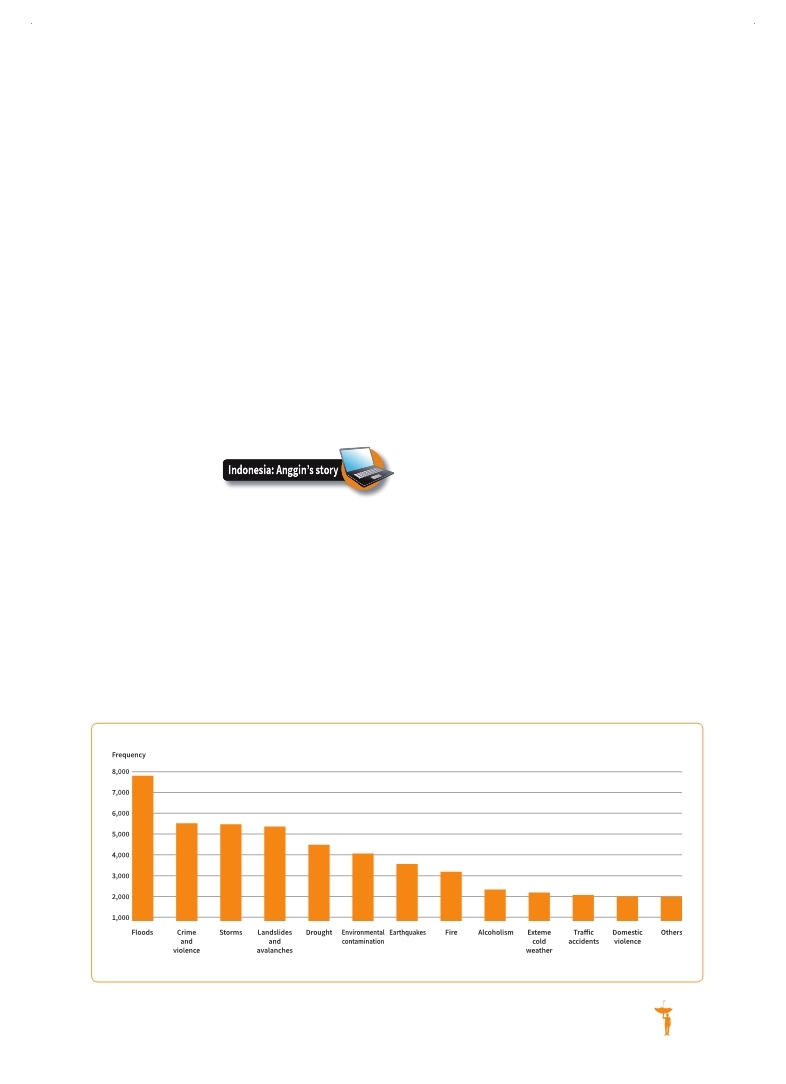 |
Global Assessment Report on Disaster Risk Reduction 2015
Making development sustainable: The future of disaster risk management |
 |
Global Assessment Report on Disaster Risk Reduction 2015
Making development sustainable: The future of disaster risk management |
|
|

149
of the Padang earthquake in 2009 demonstrated conclusively that well-targeted education and the communication of risk information can increase awareness of hazards and their potential impacts (
 GFDRR, 2014a GFDRR, 2014a GFDRR (Global Facility for Disaster Reduction and Recovery). 2014a,Understanding Risk: The Evolution of Disaster Risk Assessment since 2005, Background Paper prepared for the 2015 Global Assessment Report on Disaster Risk Reduction. Geneva, Switzerland: UNISDR.. GFDRR (Global Facility for Disaster Reduction and Recovery). 2014a,Understanding Risk: The Evolution of Disaster Risk Assessment since 2005, Background Paper prepared for the 2015 Global Assessment Report on Disaster Risk Reduction. Geneva, Switzerland: UNISDR.. Click here to view this GAR paper. While risk can be objectivized through metrics such as annual average loss (AAL) or probable maximum loss (PML) or through maps, these metrics only become useful if they are socially appropriated. Given that risk is socially constructed, this is a prerequisite for a transformation in how the social and economic constraints and
opportunities facing households, businesses or governments are valued. What is considered acceptable or unacceptable risk, or what is an optimum strategy for risk management can only be understood in the relationship between the stakeholders and these opportunities and constraints.
Local assessments of everyday and disaster risks, for example, show how the prevalence of nonphysical hazards and of small-scale recurrent events is part of an undifferentiated multi-threat environment (Figures 7.5 and 7.6). They also show how households of different income levels have very different perceptions of risk.
Not only risk but also the production of risk information is socially constructed. Beyond the instrumental barriers to its use (described in detail in Section 7.8), risk information so often fails to trigger changes in how risk is managed precisely because disaster risk is presented as an objective externality that can be measured and reduced rather than only one of a number of variables in a complex social, economic, political and cultural web of constraints and opportunities (UNISDR, 2011a
UNISDR. 2011a,Global Assessment Report on Disaster Risk Reduction: Revealing Risk, Redefining Development, Geneva, Switzerland: UNISDR.. . (Source:
 Gibson, 2014 Gibson, 2014 Gibson, Terry. 2014,Local level Monitoring: ‘Front-line’ – building on the experience of Views from the Frontline, Input Paper prepared for the 2015 Global Assessment Report on Disaster Risk Reduction. Geneva, Switzerland: UNISDR.. Gibson, Terry. 2014,Local level Monitoring: ‘Front-line’ – building on the experience of Views from the Frontline, Input Paper prepared for the 2015 Global Assessment Report on Disaster Risk Reduction. Geneva, Switzerland: UNISDR.. Click here to view this GAR paper. Figure 7.5 High-priority threats as reported by communities in ten countries in Latin America12
|
 
Page 1Page 10Page 20Page 30Page 40Page 50Page 60Page 70Page 80Page 90Page 100Page 110Page 120Page 130Page 139Page 140Page 141Page 142Page 143Page 144Page 145Page 146Page 147Page 148Page 149Page 150->Page 151Page 152Page 153Page 154Page 155Page 156Page 157Page 158Page 159Page 160Page 161Page 162Page 163Page 170Page 180Page 190Page 200Page 210Page 220Page 230Page 240Page 250Page 260Page 270Page 280Page 290Page 300Page 310
|
|
 
|
 
|
